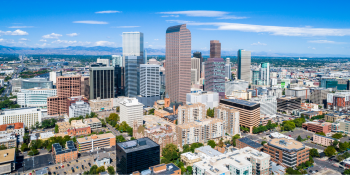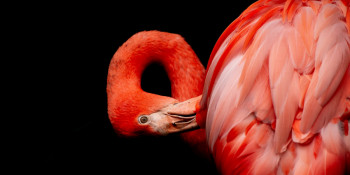
Urban Heat Islands

Back to Education Center | Roofing Guide | Cool Roofs
Cool Roofs Reduce Urban Heat Islands
Dark-colored materials absorb more heat from the sun (think about wearing a black shirt on a hot sunny day. Tests have shown that dark-colored surfaces in the sun can become up to 70°F (40°C) hotter than the most reflective light-colored surfaces. Shingles with lighter coloration (i.e. cool roofing materials) reflect the solar energy more effectively, per the DOE:
- Typical Black Shingle: 4% Solar Reflectance
- Conventional White Shingle: 28% Solar Reflectance
- Bright White Shingle: 41% Solar Reflectance
When it comes to roofing, dark-colored roofing materials will not only absorb heat, but also transfer it inside the building. So, staying comfortable under a dark-colored roof often means more air conditioning and thus higher utility bills. In this case, investing in a cool roof can translate to lower operating costs for homes and commercial buildings.
Additionally, dark-colored roofs also heat the air around them, contributing to what is known as the heat island effect. Essentially, a heat island is formed by dark surfaces (i.e. roofing and pavement) in urbanized areas, which become markedly hotter than surrounding rural areas. Light-colored cool roofs can reduce the heat island effect and save energy.
In 1998, the DOE’s Heat Island Group carried out a detailed analysis of energy-saving potentials of light-colored roofs in 11 U.S. metropolitan areas. Several residential and commercial building types were studied in each area, with both the savings in cooling and penalties in heating were considered. In was found that white roof coatings can decrease air conditioning energy usage by 10% to 50%. When extrapolated to nationwide, it was estimated that widespread implementation of white roof coatings could save $750 Million annually.
Potential net energy savings from changing roof reflectivity. Savings are measured in dollars. Note that the net savings are the savings of cooling energy use less the penalties of heating energy use.
Urban Heat Islands and Pollution
Higher temperatures in urban heat islands directly translate to increased energy usage, mostly due to a greater demand for air conditioning. As increased air conditioner use takes place, power plants burn more fossil fuels, which in turn increases both the pollution and energy costs. The Heat Island Institute asserts that peak cooling demands throughout the U.S. can rise by about 10 GW on a hot summer afternoon. In the worst cases, such as Los Angeles, peak cooling demand can rise 1.5% for every single degree F that outside temperature rises. (http://eetd.lbl.gov/newsletter/cbs_nl/nl02/cbs-nl2-heatislands.html)
The impact of these higher temperatures is also seen in smog formation: the higher the temperature, the higher the concentration of smog. The Heat Island Group posits that increases in air temperature are responsible for about 20% of smog concentration in urban areas. Moreover, a study conducted by Northwestern University concluded the formation of smog increases at temperatures over 95F. So, we can then conclude that through lowering temperatures in urban areas, cool roof coatings can both improve comfort and air quality.
For more about urban heat islands, check out some of the EPA’s resources.






